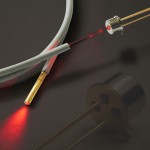
At the base of the cutting-edge functions proposed by the new generations of cars, the presence of a communication network based on plastic optical fibres able to withstand the thermal and mechanical stresses of vehicles
Plastic Optical Fibres (POF, Plastic Optical Fiber) have been used by the automotive industry since 1998, after that they had been successfully introduced by Mercedes Benz in its top models as basis for the MOST (Media Oriented Systems Transport) standard network, optimized to manage the entertainment and information systems of a vehicle. At present six automotive industries and 60 suppliers of components are cooperating to favour the adoption of the MOST network in more than 115 car models. Starting from the first radios of the Seventies, the quantity and the typology of “in-car electronics devices” have grown to the extent of reaching a number of network nodes exceeding 12, with about 66 possible combinations of fibre connections. These quantities have imposed particular design attention to the car both in terms of physical space and of additional weight, and we presently use POF made of polymethylmethacrylate (PMMA) with 980μm diameter core and 1000μm cladding, with polyamide protective sheath. The MOST network uses as light source a LED operating at 660nm and photodiodes as receiving elements. In 2012 AUDI started implementing the new MOST150 version of the standard in A3 models, with transmission speed of 150Mbit/sec. There are other net protocols that are competitors of MOST, including CAN (Controller Area Network) and LIN (Local Interconnect Network), but MOST still ranks among the preferred ones, also considering the new availability of plastic fibres that can withstand 105°C and that will replace the previous ones, which had the limit of 85°C. The next third generation of MOST will be dedicated not only to infotainment but also to the management of all “automotive lighting” requirements, consolidating its leadership.



